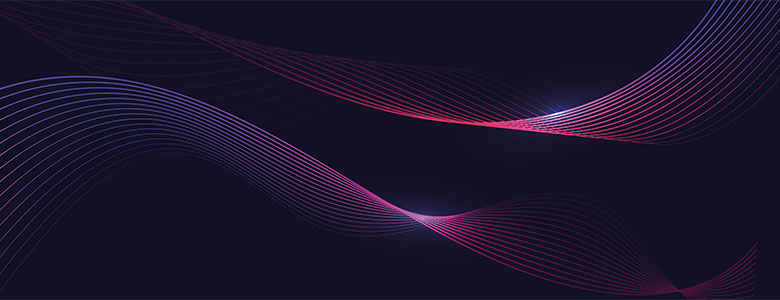Article What will work look like in 2035? How to build business resilience with a long-term strategy
By Insight Editor / 10 Nov 2020 / Topics: Collaboration Modern infrastructure

The global COVID-19 pandemic has forced organisations to revolutionise their way of working almost overnight and to accelerate their digital transformation. Remote work is the most significant trend of the past year and will be part of the long-term strategy of businesses that are trying to build resilience for the future. These changes are not only driven by technology, but also by people. Three elements are key in reimagining work: security, user experience and choice.
Not a single business leader in the world could have foreseen the enormous challenges that 2020 has produced. Remote work was already part of the agenda of many organisations, but digital transformation has now accelerated at the speed of light. Some companies were well prepared to deal with the new reality, while others struggled. One thing is clear: although we don’t have a crystal ball to predict the future, we need to think in the long term and try to imagine what work will look like in a post-corona world.
To support businesses in building resilience, Citrix undertook a year-long examination of global work patterns and plans to understand how work will change and the role technology will have in this process. Together with Oxford Analytica and business research specialist Coleman Parkes, over 500 C-Suite leaders and 1.000 employees of large and mid-market businesses in Europe and the US were surveyed on current and future workforce strategies. For a complete overview of the results, we refer to this document about the study.
The overall conclusion? Driven by flexible models and intelligent solutions that remove the complexity and noise from work, employees will be more engaged and productive and fuel innovation like never before.
The next normal
“The COVID-19 pandemic has forced companies to reimagine the way things get done, and over the next 15 years, they will face more challenges and disruptions than ever”, said Tim Minahan, Executive Vice President of Business Strategy at Citrix. Disruption and change are inevitable for companies. Whether it is a virus causing a global pandemic or the rapid digital transformation, organisations must be flexible and adaptive if they want to build resilience.
Therefore, companies should take the current crisis as an opportunity to plan for the next normal. Instead of returning to where they were, they must embrace the new reality and enable work wherever, whenever and however. There are three important elements to consider when preparing for these changes: user experience, security and choice.
Some organisations have become extremely secure but are a nightmare for employees who require access to applications, or for IT teams that manage the infrastructure. Other companies have mainly focussed on providing a great user experience but run enormous risks due to a lack of security measures. The answer to this challenge is finding a balance between security and experience without giving up on all solutions that are in place.
Digital gap
People should always come first in the organisation of work. The survey by Citrix about work in 2035 reveals a clear gap between management and employees in the way they think about technology. Almost 73% of managers believe that AI and other technology will at least double productivity, an opinion shared by only 39% of employees. Moreover, the majority of employees expects a fragmented world dominated by large enterprises that have replaced many jobs by technological solutions.
There is a clear digital disconnection that can have a deep impact on the value and benefits that technology can offer to support businesses. This is why employees must be part of the revolution. They need to be able to improve their skills and understand that technology will add value to their life instead of taking something away. Providing a good user experience is therefore key in long-term strategies.
Secure user experience
Complexity is the most important bottleneck for modern organisations. Many different people need access to the network and applications, not just employees but also external users. Most employees expect their employer to be flexible by allowing the use of business devices for more private matters as well. People should also be able to work from anywhere these days, for example at the airport or in a coffeeshop. On the backend many organisations use a combination of data centres and cloud solutions. Applications have also become more complex than ever, which is intensified by the introduction of SaaS applications.
To increase productivity levels and engagement of employees, companies need to provide a great user experience. Think about single sign-on, quick access to all apps, etc. On the other hand, security becomes more important than ever. Zero trust is a new approach that eliminates the concept of trust from an organisation’s network architecture. It starts from the principle ‘never trust, always verify’ and is designed to protect modern digital environments by preventing lateral movement, leveraging network segmentation and simplifying granular user-access control.
Finally, organisations want freedom of choice. Past decisions about business solutions have been made for a reason and should not be questioned. We may live in a different world now but companies need to think about their costs and cannot replace everything they have. For Citrix, these elements are key in providing solutions to customers. Citrix Workspace is a low-compromise model that ensures a great user experience without giving up on security.
It applies the concept of zero trust by putting a security layer around the user instead of the infrastructure. Citrix is also technology-agnostic: it does not matter what sort of devices, applications or operational systems organisations use, or whether workloads are kept in a data centre or cloud. Each company has its own pace and challenges while adapting to the next normal. But we need to make sure that our short-term measures of the past months are reviewed and optimised to guarantee business continuity now and in the future
Find out what the future holds for your enterprise by subscribing to a free event organised by Insight. Hear from economist Ivan Van de Cloot about the economic and societal background that will impact innovation and change. Subscribe & discover the agenda by clicking on the link below!



